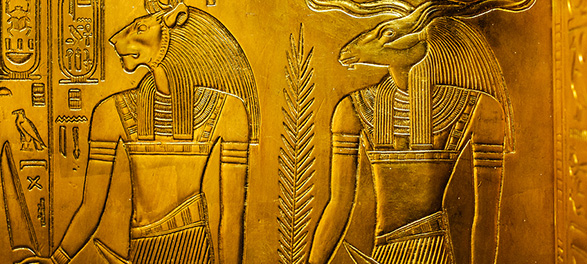
According to Geology.com, people probably mined for gold before they sought almost any other metal. This could be because ancient people could find pure gold that did not need to get processed out from other metals or minerals, so gold was fairly easy to spot, access, and use. No doubt, most gold that was very easy to find and obtain was exploited long ago. In gold-producing regions of the world, it was surely easier to simply stumble across an open vein in ancient times than it is today.
Nobody wonders why ancient civilizations found gold valuable. This precious metal looks very beautiful in its natural form, and because pure gold is soft, it is relatively easy to work into different shapes. Archeologists have found beautiful gold objects in the Middle East that date back 5,000 years. In the past as now, gold was used to make decorative objects and was also recognized as a store of value. Over the last 50 centuries, national currencies have come and gone, but gold remains valuable and useful.
A Short Timeline of the World’s History of Gold as a Currency
In a Reuters article, “Timeline – Gold’s History as a Currency Standard,” there is a comprehensive list of important dates documenting how the metal has been used as an official currency over time. The timeline of the use of gold as an official currency begins a bit later than the earliest history of the decorative use of gold in ancient Egypt. However, it is not impossible to imagine that gold was also bartered as an unofficial currency even earlier. In any case, scholars still say that the ancient Egyptians did officially consider gold a currency by 3,500 years ago.
These are some of the highlights of the world’s history of gold as money:
1500 BCE: Gold debuted as a recognized exchange standard for international trade as the people of ancient Egypt leveraged Nubian gold to build wealth for their empire.
50 BCE: Ancient Romans first issued the aureus, a gold coin.
1066 AD: The Norman conquerors firmly established a British currency system, and the original pound actually was a pound of silver, another metal historically used for currency.
1284 AD: Venice first issued the gold ducat, a coin that would remain popular as currency for the next 500 years. The same year, England issued the gold florin, that country’s first major gold currency.
1792 AD: The United States began a silver-gold standard monetary system. The established value of a dollar is set to 24.75 grains of pure gold or 371.25 grains of pure silver.
1900 AD: The United States is officially put on a gold standard. The country agreed to maintain their currency at a fixed exchange rate in relation to other nations.
1971 AD: President Nixon takes the United States off the gold standard.
1978 AD: A soft dollar encourages renewed interest in buying gold as a store of value and hedge against inflation.
2010 AD: Robert Zoellick, the president of the World Bank, said that the world’s biggest economies should return to the gold standard in order to stabilize currency values.
2011 AD: The price of gold hits a record high of $1,923 an ounce.
What’s the Future of Gold as a Currency?
Most people measure the value of gold in their own currency. However, this really isn’t any more accurate than measuring currency by the amount of gold it can buy. The problem with either measure is that currency values fluctuate every day. The true value of gold over the years is its ability to hold its value in terms of actual purchasing power. At times when currencies have been weak, gold tends to increase in purchasing power. At Scottsdale Bullion & Coin, our future is in gold.

